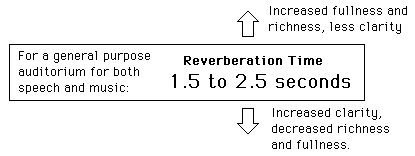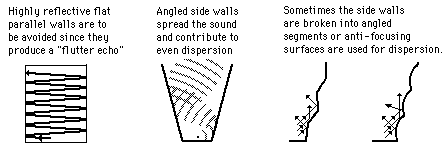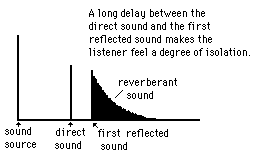Clarity
While the richness and fullness added by auditorium reverberation is desirable, such reverberation decreases clarity of articulation. So fullness and richness work against clarity, and a reasonable reverberation time must be reached by an appropriate compromise of clarity vs fullness.

Clarity can also be diminished by undesirable echoes. At specific locations in auditoriums, clarity can be diminished by anything which blocks part of the direct sound and therefore increases the fraction of reverberant sound reaching a person.
| Architectural contributions to good acoustics |
Auditorium acoustics
| HyperPhysics***** Sound | R Nave |

